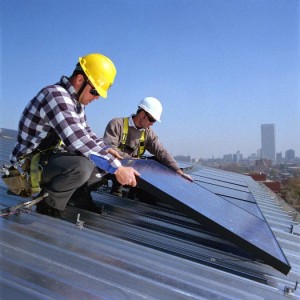Kevin Rudd called it our greatest challenge. At about the same time Tony Abbott called it “bullshit”. I am talking about climate change of course. The years have passed since then, so where are we now?
We can start the inventory by looking at targets. Back then we had a renewable energy target (RET) of 41,000 gigawatt hours by 2020. This was 5% of projected electricity usage. Since then the projection of energy use has dropped. 5% of the total market now equates to 26,000 gigawatt hours so the government said after the Warburton review last year. So the argument is do we still aim for 20% or do we aim for 41,000?
As with most targets, the question becomes clearer if you look at the purpose of the target. The main purpose was to encourage the solar and wind generation industries. To give them some certainty that there would be a market, and it would be substantial. If you were planning on entering, or expanding your business in renewables, would you be more confident if you knew the size of your market, or just a percentage of a projection?
Obviously it is better for a business to know the size of the market. That is why it is important to set a total market size figure and not vary the number. Imagine you see an opportunity to expand your factory to produce solar panels with a capacity of 10,000 gigawatt hours. You would be much more comfortable to make the investment if you were assured the market was going to be 41,000 gigawatt hours than if it was going to be 5% which might only be 26,000 gigawatt hours.
For months the government has been trying to get Labor to agree to support a reduction of the RET. Meanwhile the solar and wind energy industries have gone into a holding pattern. Nobody wants to invest in a market that may or may not be 41,000 gigawatt hours depending on government negotiations. The latest is that a mid point of 33,000 gigawatt hours has been agreed between the two parties. Now there are lots of details such as the government wanting to regularly review the target. More uncertainty.
In spite of the government mantra of “jobs, jobs, jobs” when it comes to new jobs in renewable energy, the government will give little support.
Now to another job generation body. The Clean Energy Finance Corporation. The CEFC was set up by Labor to invest in renewable energy generation. It does not give money away. It invests money in organisations to enable them to produce renewable energy. In fact it made a 7% profit in 2013. Another “jobs, jobs, jobs” organisation you would think. Wrong. The Liberals want to close it down. What possible reason would a government who supports business have for closing it down? CEFC helps companies expand and hence creates more jobs, makes a profit, and is growing.
Could it be that Tony Abbott considers “clean energy” as “poison for coal”?
Australia voted to get rid of the Carbon Tax. I might not agree, but that was what the majority wanted. So did it work? During the period of the carbon tax we did see a reduction in emissions. What happened when it was repealed?
Coal fired generators provide 75% of our electricity. Brown coal is the cheapest coal, but also the most polluting. Since the repeal of the carbon tax, the use of brown coal has jumped. According to Dr Hugh Saddler – the principal consultant for Pitt and Sherry, an environmental engineering consultancy – figures from April 2015 indicate that brown coal now constitutes 24 per cent of the coal used for generation. It has been growing in use since the tax was repealed. This is the most brown coal used since 2012. In other words, the carbon tax drove down the use of brown coal, and repealing the tax caused brown coal use to rise.
 Now to direct action. Direct action is basically about giving money to organisations to reduce their pollution. On the other hand the carbon tax was to take money from institutions if they polluted. Direct action gives the taxes we pay, to businesses to fund environmental improvements. The carbon tax generates money from business to encourage environmental improvements.
Now to direct action. Direct action is basically about giving money to organisations to reduce their pollution. On the other hand the carbon tax was to take money from institutions if they polluted. Direct action gives the taxes we pay, to businesses to fund environmental improvements. The carbon tax generates money from business to encourage environmental improvements.
The first bunch of Direct Action funding spent $660 million and set aside 47 million tonnes of carbon abatement at $13.95 a tonne. Had the carbon tax still been in place, the cost would be about $10 per tonne. We are now paying more per tonne than under the carbon tax. In addition, our taxes are paying industry rather than them paying a tax. What am I missing?
The old adage “follow the money” gives us some insight to the Abbott government policy. Does coal or renewable energy bring in most tax?
I could go on, but to summarise, the Abbott government has managed to limit the growth of a renewable energy industry; try to close down a profitable financial institution that was funding renewable energy projects; increase the use of polluting brown coal; and pay more for reducing pollution. Perhaps “Direct Action” should be renamed “Suspect Action”. In any case the call of “jobs, jobs, jobs” needs to be changed to “jobs, jobs, jobs will go”.
